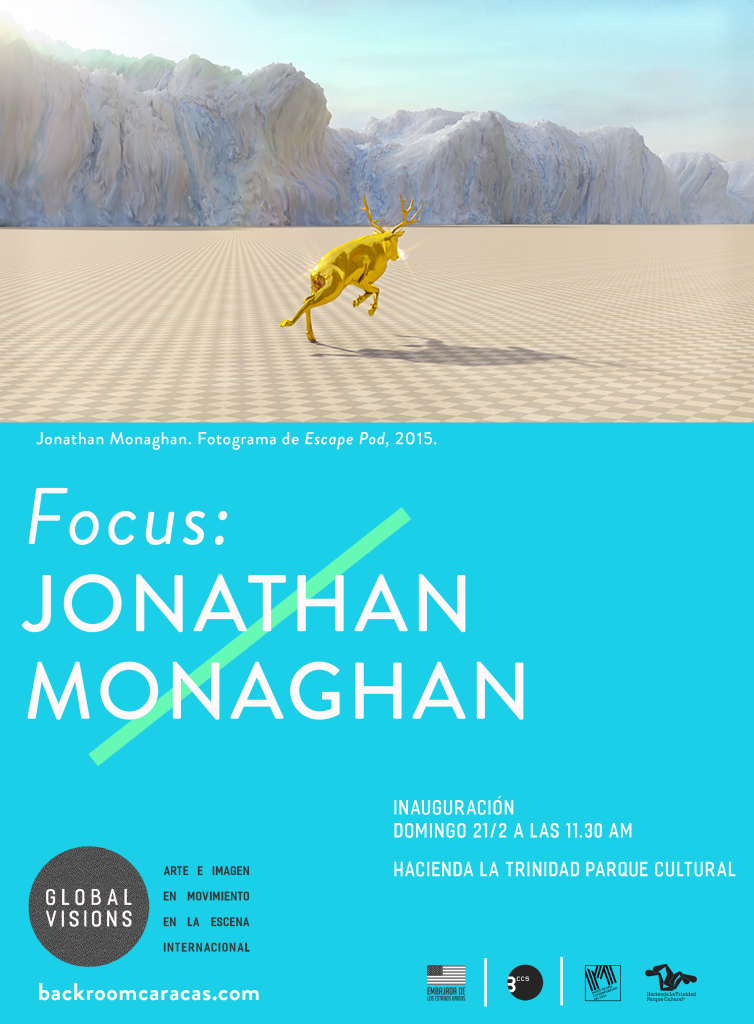NT: What are you going to show in Venezuela?
JM: I’m going to be exhibiting a number of computer animated films, and they are going to be installed in various galleries spaces in Venezuela, and works are surreal explorations of power and commerce in the digital age.
NT: How has been your experience showing your work in Latin America?
JM: I was in Brazil for a screening once and I wish I was able to show more. I have had great experiences in Latin America and I wish to go back and exhibit more.
NT: Escape Pod is a futuristic dystopian fairytale where we can see fusions of living matters with objects and buildings. How did you become interested in the fusion of things?
JM: There is a lot of artists who work with a certain degree of fluidity with the way they play with meanings and identities, and I think this is the result of the digital age. So, with my work this is sort of a logic where objects and things have their own history and they are put together to create a new history.
NT: It looks like you are interested in the hybrid, representing this duality we face in our days living in both the physical and digital realms.
JM: Yes, I’m very interested in the boundaries between what’s real and what’s virtual. I think in the digital age we have to be careful. I think it is and interesting artistic exploration to try to play boundaries between what’s real and what’s virtual because often times we never have clear boundary. So, yes, I’m trying to play with these borders.
NT: Your work seems to be the borderline between cinema and videogames. Can you tell us more about your aesthetic?
JM: As a kid I played a lot of videogames. I also started to make videogames when I was a kid, and that’s what taught me a lot of about techniques that I use today to make my work. I was developing this videogame environments, so there’s a certain relationship between videogame environments, which are meant to be kind of explored, and my work today which are the virtual environments I create which I allow my viewers to explore. My works are cinematic, but not interactive. However the way we move through the world feels like the way we move through a videogame. So there’s a lot of influence from the videogames in my work today.
NT: Are there any characters in your work?
JM: There are always some kind of animal characters in my work. They’re usually very mythical animals, like deer or lambs. The animals are the characters of the films which unveils a metaphorical story.
NT: Can you tell us about life experiences, artists or works that have inspired you to become a visual artist working with video?
JM: I have always been a fan of the works of Stanley Kubrick, like 2001 Space Odyssey. I have been influenced by a lot of filmmakers, but I don’t think there is a specific influence. I also enjoy the work of the surreal painters. It’s also that I’m influenced by our culture, and I think I’m influenced by our society and what’s going on in our world today.
NT: How did you become interested in working with 3D graphics?
JM: When I first picked up this 3D graphic software I was in high school, and what drew me to it, the reason I was so excited about it was because it offered the possibility for a capital-free moving image creation. It was me and my computer but I felt like I have power while using the software, because I didn’t know how to draw a painting or anything like that. At least in theory, I have the capabilities to create a whole Pixar film, and so I felt that excitement was very important for me, and what kept me going using this as an artistic medium. It’s a challenge but also an excitement possibility.
NT: What makes you create these odd and exceptional worlds together, where a duty-free shop is next to a sleek bedroom? And how do you put that together?
JM: Everything starts on my sketchbook. I develop the works there, I’m usually just writing down phrases that kind of don’t really make sense, but make sense to me, and then I develop this world, this contrast based on what I take as a funny juxtaposition. There is a humor to it.
NT: Yes, I’ve seen testicles as a base of an architectural structure in your work…
JM: Right. So it’s giving architecture, human body parts or these ordinary things like a duty-free shop a specific aesthetic. This creates a funny contrast.
NT: Are you coming to Venezuela?
JM: I’m trying. I’m filling the whole visa now… It’s a lot of work but will see if it goes through!
Watch Jonathan Monaghan’s Escape Pod trailer:


















